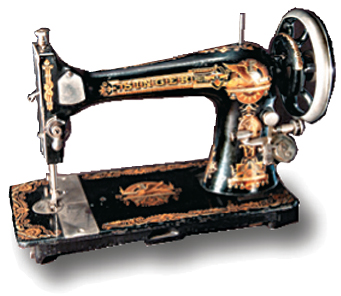America's Diverse Workers.
Printed Page 514 Chapter Chronology
America's Diverse Workers. Common laborers formed the backbone of the American labor force. They built the railroads and subways, tunneled under New York's East River to anchor the Brooklyn Bridge, and helped lay the foundation of industrial America. These "human machines" generally came from the most recent immigrant groups. Initially, the Irish wielded the picks and shovels that built American cities, but by the turn of the century, as the Irish bettered their lot, Slavs and Italians took up their tools.
At the opposite end of labor's hierarchy stood skilled craftsmen like iron puddler James J. Davis, a Welsh immigrant who worked in the Pennsylvania mills. Using brains along with brawn, puddlers earned good wages — Davis drew up to $7 a day at a time when streetcar fare was 3 cents, when there was work. But most industry and manufacturing work in the nineteenth century remained seasonal; few workers could count on year-round pay. In addition, two major depressions twenty years apart, beginning in 1873 and 1893, brought unemployment and hardship. With no social safety net, even the best worker could not guarantee security for his family. "The fear of ending in the poor-house is one of the terrors that dog a man through life," Davis confessed.
Employers attempted to replace people with machines, breaking down skilled work into ever-smaller tasks that could be performed by unskilled factory operatives. New England's textile mills provide a classic example. Mary, a weaver at the mills in Fall River, Massachusetts, went to work in the 1880s at the age of twelve. Mechanization of the looms had reduced the job of the weaver to watching for breaks in the thread. "At first the noise is fierce, and you have to breathe the cotton all the time, but you get used to it," Mary told a reporter from Independent magazine. "When the bobbin flies out and a girl gets hurt, you can't hear her shout — not if she just screams, you can't. She's got to wait, 'till you see her. ...Lots of us is deaf."
During the 1880s, the number of foreign-born mill workers almost doubled. At Fall River, Mary and her Scots-Irish family resented the new immigrants. "The Polaks learn weavin' quick," she remarked, using a common derogatory term to identify a rival group. "They just as soon live on nothin' and work like that. But it won't do 'em much good for all they'll make out of it." Employers encouraged racial and ethnic antagonism because it inhibited labor organization.

Mechanization transformed the garment industry as well. The introduction of the foot-pedaled sewing machine in the 1850s and the use of mechanical cloth-cutting knives drove out independent tailors, who were replaced by pieceworkers. Sadie Frowne, a sixteen-year-old Polish Jew, worked in a Brooklyn sweatshop in the 1890s. Frowne sewed for eleven hours a day in a 20-by-14-foot room containing fourteen machines. "The machines go like mad all day, because the faster you work the more money you get," she recalled. She earned about $4.50 a week and, by rigid economy, tried to save $2. Young and single, Frowne typified the woman wage earner in the late nineteenth century. In 1890, the average workingwoman was twenty-two and had been working since the age of fifteen, laboring twelve hours a day six days a week and earning less than $6 a week.
sweatshop
A small room used for clothing piecework beginning in the late nineteenth century. As mechanization transformed the garment industry with the introduction of foot-pedaled sewing machines and mechanical cloth-cutting knives, independent tailors were replaced with sweatshop workers hired by contractors to sew pieces into clothing.